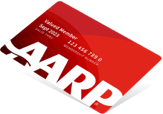

The CARES Act signed into law in late March offered some relief to the nation's estimated 30 million small businesses, especially through its Paycheck Protection Program (PPP), meant primarily to cover employee payroll costs. But many entrepreneurs, including many of the country's estimated 4.4 million Hispanic small-business owners, didn't even have a chance to start the application process before the initial $349 billion funding ran dry in just 13 days, while others didn't complete the application due to widespread confusion about the process. While the PPP eventually did receive additional funding, the program closed its application process on June 30, 2020.

Join AARP for just $9 per year with a 5-year membership and get a FREE Gift!
"Most small-business owners don't have CFOs or full-time accountants,” said Nely Galán, 57, a well-known Latina entrepreneur who has been running webinars in English and Spanish to guide others through the application process for both the PPP and the Economic Injury Disaster Loan Program (EIDL). “The struggle of running our companies during a crisis and then filling out confusing forms we don't understand and with no help — it's too much.”
The PPP eventually did receive additional funding, and the deadline to apply for assistance has been extended to August 8, 2020.
While both the PPP and the EIDL are types of loans — and businesses could apply for both — their intended purposes are different. Businesses can apply to the PPP through a lending institution approved by the Small Business Administration (SBA) for loans of up to $10 million to maintain payroll and related benefits, interest on mortgages and other debts, leases, and utility payments. One of the main draws of the PPP is that 100 percent of the loan can be forgiven if the funds are used properly. For the EIDL, however, businesses apply directly through the SBA for up to $2 million in financial assistance to cover a wider range of daily business expenses, from payroll and accounts payable to fixed debts. While the EIDL is not forgivable, you may qualify for a $10,000 advance that may not have to be repaid.
On April 27, the SBA once again began to accept PPP applications after Congress approved an additional $310 billion in funding, with some of that set aside specifically for smaller banks that tend to work with underserved communities. “The SBA has taken measures to ensure that small and medium-sized banks have an equal opportunity to access the PPP funds on behalf of their customers,” Victoria Guerrero, district director of the SBA in South Florida, said at the time. “Such efforts are helping ensure small businesses with local and community-based relationships get the capital they need to keep their employees on the payroll."
According to recent studies, over the past 10 years, the number of Latino business owners grew 34 percent, compared to 1 percent for all business owners in the United States. Within this group, businesses owned by Latinas, like Galán, are increasing, accounting for 44 percent of Latino-owned businesses.
"I ran these [PPP and EIDL] webinars in Spanish because I am Latina and I wanted all those Latino business owners who are holding up this country and hiring so many family and community members to feel part of this process,” Galán said. “I want them to know they deserve this money, and I wanted to show them how to get it."